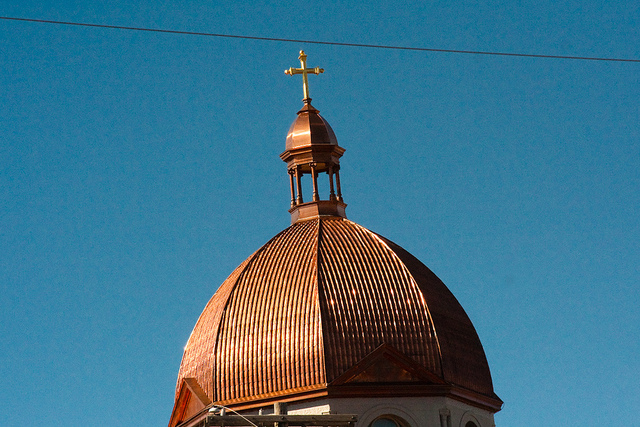Benefits of Copper as a Roofing Material
One of the best ways to use copper is for copper roofing purposes. You can use copper shingles to create a metal roof or you can use them to create a copper shingle dome. Why is copper in particular such a great option when it comes to metal roof shingles? The following benefits explain why.
Corrosion resistance
On the surface of copper, tough oxide-sulfate patina form to protect underlying copper surfaces from corrosion, which is the gradual destruction of metal due to a chemical reaction with its environment. This is perfect for copper roofs because you’ll never have to worry about needing to replace your roof.
Durability
Copper roofs can last for hundreds of years because of the protective patina that forms on the surface of copper. Eighteenth century European copper roofs have proven that architectural copper domes can last for more than one thousand years.
Low maintenance
Copper does not require cleaning or maintenance, which is why it’s the perfect material for roofs. After your copper roof installation, you’ll never have to go up on the roof again to clean or fix it.
Lightweight
A copper roof, whether it’s a standing seam copper roof or an architectural copper dome, is extremely light. It’s half the weight of lead roofs and a quarter of the weight of tiled roofs. This saves you money in supporting structure and material costs, and it’s safer all around.
Ventilation
Copper does not need complex ventilation measures. It works for ventilated cold roof constructions and unventilated warm roof constructions.
Lightning protection
The most common materials used in residential lightning protection materials are copper and its alloys. Due to its electrical conductivity, copper effectively transmits lightning energy to the ground. Thus, a copper roof alone will give you all the lightning strike protection you need.
Various finishes
The surface of copper can be chemically altered to create a different color. While copper itself produces a patina finish as it ages, it can be treated to produce that same green or patina finish before it starts to age.
Recyclability
Copper is virtually 100 percent recyclable, and it can be recycled thousands of times without losing any of its quality. Not only is this great for the environment, but it’s great for people who are looking for sustainable materials to build their roofs with.


